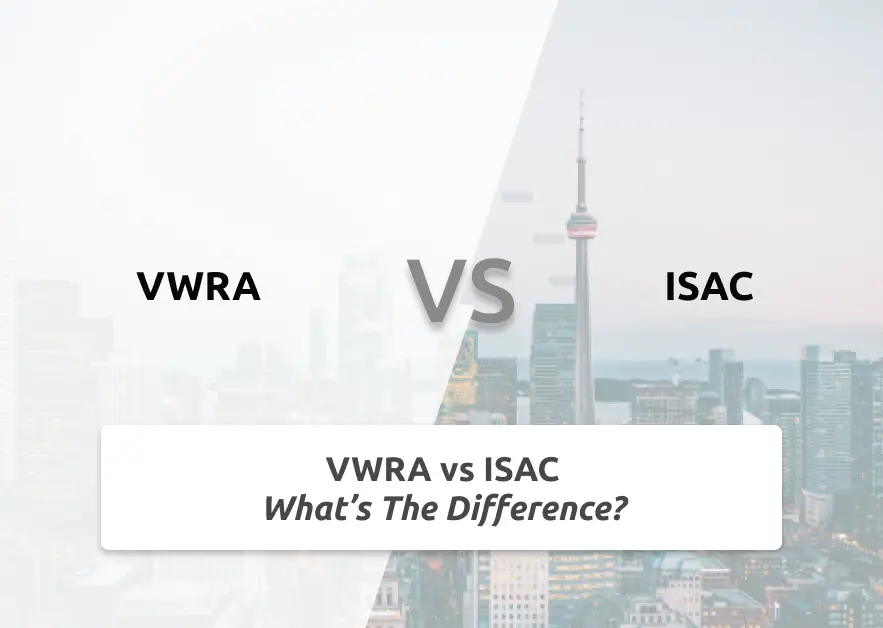If you are thinking of including a percentage of your portfolio in passive investments, you might have heard of VWRA and ISAC. Both ETFs provide exposure to a broad range of worldwide companies, across different sectors and countries.
Here’s what you need to know about these 2 ETFs:
Contents
Indices tracked
VWRA is a fund that tracks the FTSE All-World Index, which includes approximately 3,900 large and mid-cap stocks in nearly 50 countries, across both developed and emerging markets.
On the other hand, ISAC tracks the MSCI ACWI Index which covers more than 2,900 large and mid-cap stocks in 23 developed and 25 emerging markets.
Just by looking at the indices tracked, it seems like both funds are pretty similar, providing exposure to both developed and emerging markets, across thousands of holdings in different sectors.
However, if you look closer into each ETF, even though each ETF is supposed to track a particular index, they may not contain all of the holdings of the index.
Number of holdings
Here are the number of holdings for each ETF:
| VWRA | ISAC | |
|---|---|---|
| Number of holdings | 3804 | 1616 |
VWRA has more than twice the number of holdings that ISAC consists of.
Fund manager
Moving on to the fund manager of each ETF, VWRA is managed by Vanguard while ISAC is managed by iShares.
VWRA was incepted in 2019, which is much later as compared to ISAC which was incepted in 2011. However, VWRA has higher assets under management (AUM) of USD$13.4 billion, as compared to ISAC with USD$4.74 billion.
Currency and Exchange
Both of the ETFs are denominated in USD, and are listed on the London Stock Exchange (LSE). If you want to find out more about buying LSE stocks from Singapore, you can check out this guide here to find out more.
Estimated Unit Prices
The unit price of each ETF is the price you’ll need to pay for 1 unit.
| VWRA | ISAC | |
|---|---|---|
| Unit Price (USD) | 107 | 68 |
Both ETFs have similar unit prices, and the unit prices are rather friendly if you do not want to invest large amounts in the fund yet.
Top Sectors
Here is a comparison between the top 5 sectors that are found in VWRA and ISAC as of 20th February 2022.
| VWRA | ISAC |
|---|---|
| Technology 23.7% | Information Technology 22.31% |
| Financials 14.7% | Financials 16.40% |
| Consumer Discretionary 14.6% | Consumer Discretionary 11.80% |
| Industrials 12.8% | Healthcare 11.15% |
| Healthcare 11.0% | Industrials 9.24% |
A total of approximately 40% of each fund is focused on the IT and Financials sectors. In terms of the top 5 sectors in each fund, both funds are highly similar.
Market allocation
Here is a comparison of the geographic breakdown of both funds.
| VWRA | ISAC |
|---|---|
| US – 59.5% | US – 60.72% |
| Japan – 6.2% | Japan – 5.46% |
| UK – 4.0% | UK – 3.72% |
| China – 3.6% | China – 3.13% |
| France 2.7% | Canada – 3.06% |
Approximately 60% of both funds are allocated to the US markets, which is largely due to the fact that most of the large IT companies are located in the US.
Top 10 holdings
Here is the comparison between the top 10 holdings of each ETF.
| VWRA | ISAC |
|---|---|
| Apple Inc 3.9% | Apple Inc 4.29% |
| Microsoft Corp 3.4% | Microsoft Corp 3.30 |
| Alphabet Inc 2.3% | Amazon Inc 2.02% |
| Amazon.com Inc 1.9% | IShares MSCI India UCITS ETF 1.44% |
| Tesla Inc 1.1% | Alphabet Inc Class A 1.18% |
| Meta Platforms Inc 1.1% | Tesla Inc 1.18% |
| NVIDIA Corp 0.9% | Alphabet Inc Class C 1.17% |
| Berkshire Hathaway Inc 0.8% | Meta Platforms Inc Class A 1.12% |
| Taiwan Semiconductor Manufacturing Co. Ltd. 0.8% | Nvidia Corp 0.91% |
| Johnson & Johnson 0.7% | Taiwan Semiconductor Manufacturing 0.81% |
| Total = 16.9% | Total = 17.42% |
Again, we can see that both funds have very similar top holdings, with the top 5 being mainly Apple, Microsoft, Amazon and Alphabet. Both funds are also largely diversified whereby the top 10 holdings only account for 16-17% of the entire fund, with a majority 80% diversified into other holdings (which aren’t disclosed in both funds’ factsheets).
Dividend distribution
Both funds are accumulating funds, which means that your dividends will be automatically reinvested by the fund managers at no extra charges.
You can read this comparison between an accumulating and distributing fund to find out more.
Dividend withholding tax
Both ETFs are also Irish domiciled, which means you will only incur a 15% dividend withholding tax for any US stocks that you own. Also take note that even though both funds are accumulating, you will still incur the tax from US stocks even if you did not receive any dividends.
As compared to other US domiciled ETFs, I would say both ETFs are considered to be more tax efficient options.
Expense ratio
On top of the trading commissions you’ll need to pay the broker, you will have to pay an expense ratio to the fund manager as well.
The expense ratio is charged by the fund manager to cover the costs of running the fund.
Based on the value of your assets in the fund, you will be charged an annual fee.
| VWRA | ISAC |
|---|---|
| 0.22% | 0.20% |
The difference seems really small for both ETFs. However, even though the expense ratios may seem very similar, the small difference may actually compound over time and affect your overall returns!
Liquidity
If you are looking to actively trade using these ETFs, you may want to look at their liquidity. One of the indicators you may want to look at is the ETF’s average trading volume.
| VWRA | ISAC |
|---|---|
| 46,069 | 162,814 |
In terms of liquidity, ISAC has about 3 times the average trading volume of VWRA. However, if you are looking to buy and hold these ETFs as part of your long-term portfolio, liquidity might not be a crucial factor in terms of deciding which ETF to purchase.
Verdict
Here is a comparison between the 2 ETFs.
| VWRA | ISAC | |
|---|---|---|
| Index tracked | FTSE All World Index | MSCI ACWI Index |
| Fund manager | Vanguard | iShares |
| Number of holdings | 3804 | 1616 |
| Top sectors | Technology 23.7% Financials 14.7% Consumer Discretionary 14.6% Industrials 12.8% Health Care 11.0% | Information Technology 22.31% Financials 16.40% Consumer Discretionary 11.80% Health Care 11.15% Industrials 9.24% |
| Geographic breakdown of market allocation | US – 59.5% Japan – 6.2% UK – 4.0% China – 3.6% France 2.7% | US – 60.72% Japan – 5.46% UK – 3.72% China – 3.13% Canada – 3.06% |
| Exchange | LSE | LSE |
| Currency | USD | USD |
| Dividend Distribution | Accumulating | Accumulating |
| Dividend Withholding Tax | 15% | 15% |
| Expense Ratio | 0.22% | 0.20% |
Since both of these ETFs seem very similar, which fund should you choose to invest in?
Choose VWRA if you prefer a more diversified fund
VWRA consist of 2200 more holdings than ISAC. Thus it is more diversified than ISAC based on the number of holdings. However, it has a slightly higher expense ratio by 0.02%, which might be a concern for some investors in the long run.
Choose ISAC if you prefer more liquidity and require regular buy-sell movements
ISAC has a higher active trading volume, with more than thrice of VWRA’s active trading volume. Thus, I would recommend choosing ISAC if liquidity is of your concern in deciding which index to track.
Conclusion
Both VWRA and ISAC allow you to purchase into a diversified portfolio that can benefit from the growth in the global economy.





